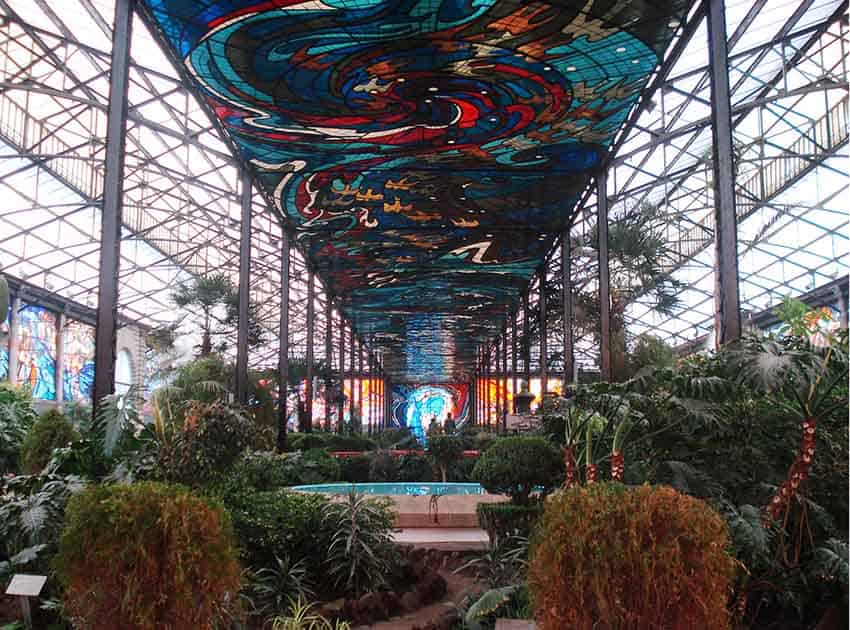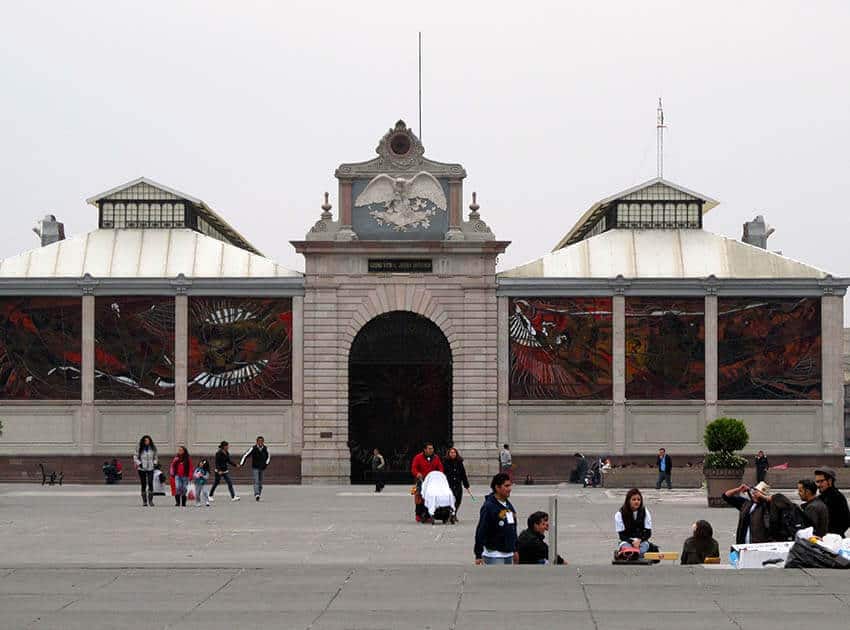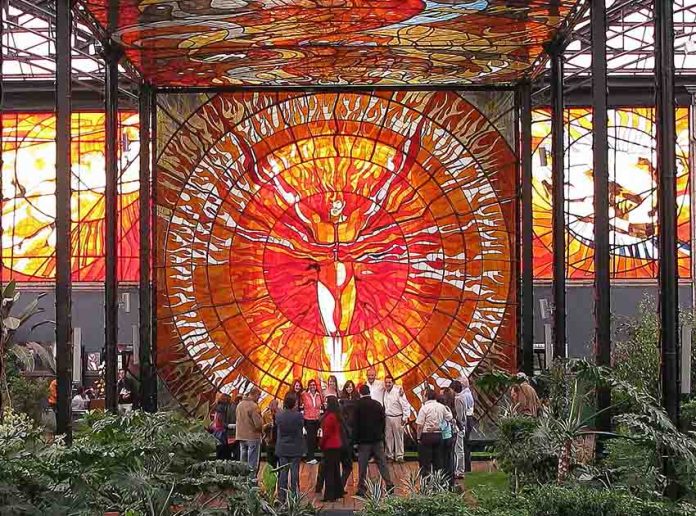Long gone are the days in Mexico when the equinox had spiritual significance — or are they?
Many of the country’s archeological sites, such as Teotihuacán and Chichén Itzá, bring thousands of people to see the sun rise in these places in March. But in the unassuming industrial city of Toluca, México state, just west of Mexico City, there is a modern “temple” to the cult of the sun.
This building is the site of the former 16 de Septiembre mercado, Toluca’s main market in the early 20th century. Covering about half a hectare, it was built, in art nouveau style, before the Mexican Revolution.
By the end of the 20th century, even this impressive building became too small for its purpose as growing industries swelled the city’s population. The market’s enclosed design meant there was no way to expand it, so it was abandoned for a newer facility in the city.
The government looked to repurpose the building, which was too beautiful and centrally located to let decay. Today, its original large windows allow for a botanical garden here with over 400 species of plants, covering about 3,200 square meters. It is dedicated to Japanese scientist Eizi Matuda, who classified over 6,000 species of plants in this region.

But the building’s main attraction is the massive artwork done by local artist Leopoldo Flores.
Flores (1934–2016) is arguably one of the most important Mexican artists to come out of Toluca, creating other monumental works, mostly in the city and the surrounding area. Toluca has created a museum in his honor associated with the state university to safeguard and promote research into many of his works.
His concept for this particular artwork was novel for Mexico, a mural done in multiple panels and using stained glass to take advantage of the window spaces that surround the upper parts of the building and its eastern and western ends.
Flores worked with 60 artisans from 1978 to 1980 to get the sections assembled and installed. It took him a year to work out the artwork’s concept and basic engineering issues. They replaced the market’s old, clear windows with 71 stained glass panels — half a million 15- to 45-centimeter pieces of imported blown glass in 28 different colors.
It all weighs 75 tons: 45 tons of glass, 25 tons of lead and 5 tons of metal supports. It’s so massive that cleaning it — a 15-month process using only water (chemicals could damage the glass), a fine wire brush and rags — involves several people who finish, only to start again.
The piece tells a story of Man and his relationship to the universe, hence its name: Cosmovitral (glass cosmos). According to the artwork’s website, the work represents “… the dualities and antagonism of cosmic forces like day and night, life and death, creation and destruction…” On the north side of the building, blue hues dominate, with brighter colors on the south side. An image of the sun is placed on the east side.

All its panels receive attention from the public, but the most important and popular by far is the Sun Man, a Leonardo da Vinci-like depiction of a male superimposed onto a solar motif, placed not on the east but on the western side of the building on ground level.
It is not only the most impressive and most accessible of Flores’s panels year-round it’s also the site of an impressive effect during the equinox: in the few days before and afterward, the setting sun aligns itself with the torso of the artwork’s male figure, appearing to set the whole work ablaze.
Interestingly enough, Flores did not emphasize this fact when he created the mural, so it is not known whether he was aware of this effect. It was only noticed in 1993 — 13 years after it was installed — by the botanical garden’s director Oliverio Jiménez in 1993.
The best of the spectacle lasts only 20 minutes. These days, a classical music concert worked out specifically for it accompanies the phenomenon. Limited seating inside the building makes the event highly anticipated and difficult to see in person. The spring equinox is far more popular than the one in the fall.
It has become an important tourist attraction for a city with few of them, as well as an important symbol for México state, which lives in the shadow of Mexico’s massive nearby capital city. The image is used heavily in the city and the state’s promotional materials.
However, most of the Cosmovitral’s visitors are from México state and the surrounding region. Very few foreigners are aware of it or its twice-annual spectacle. The site is worth a visit when passing through the area, even if it’s not the equinox. It is the largest secular stained-glass work in the world, and tour guides can explain the meanings of its different panels (in Spanish).
Cosmovitral is also a popular venue for weddings and portrait photos. It is part of a tapestry of other important locations in the city center, including the cathedral, various museums and the surrounding shops and restaurants.
When I lived in Toluca (2003–2008), a massive semipermanent street market that took over a central plaza made visiting difficult. This site has since been moved to another part of town, allowing for better views.
What has not changed is the city’s chilly climate during most of the year, so a sweater or jacket is definitely recommended, especially at night.
Leigh Thelmadatter arrived in Mexico 18 years ago and fell in love with the land and the culture in particular its handcrafts and art. She is the author of Mexican Cartonería: Paper, Paste and Fiesta (Schiffer 2019). Her culture column appears regularly on Mexico News Daily.
